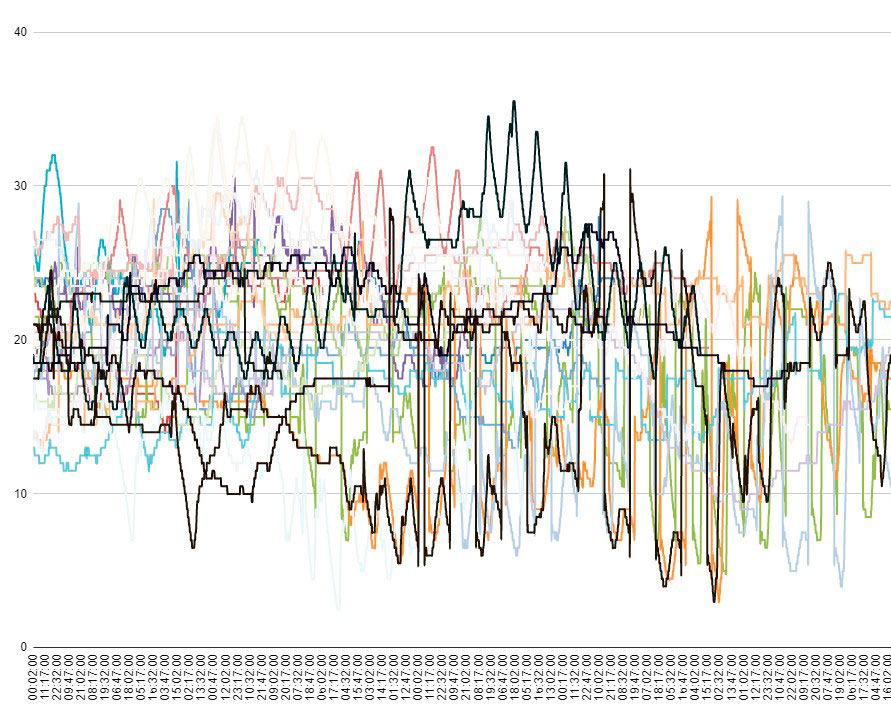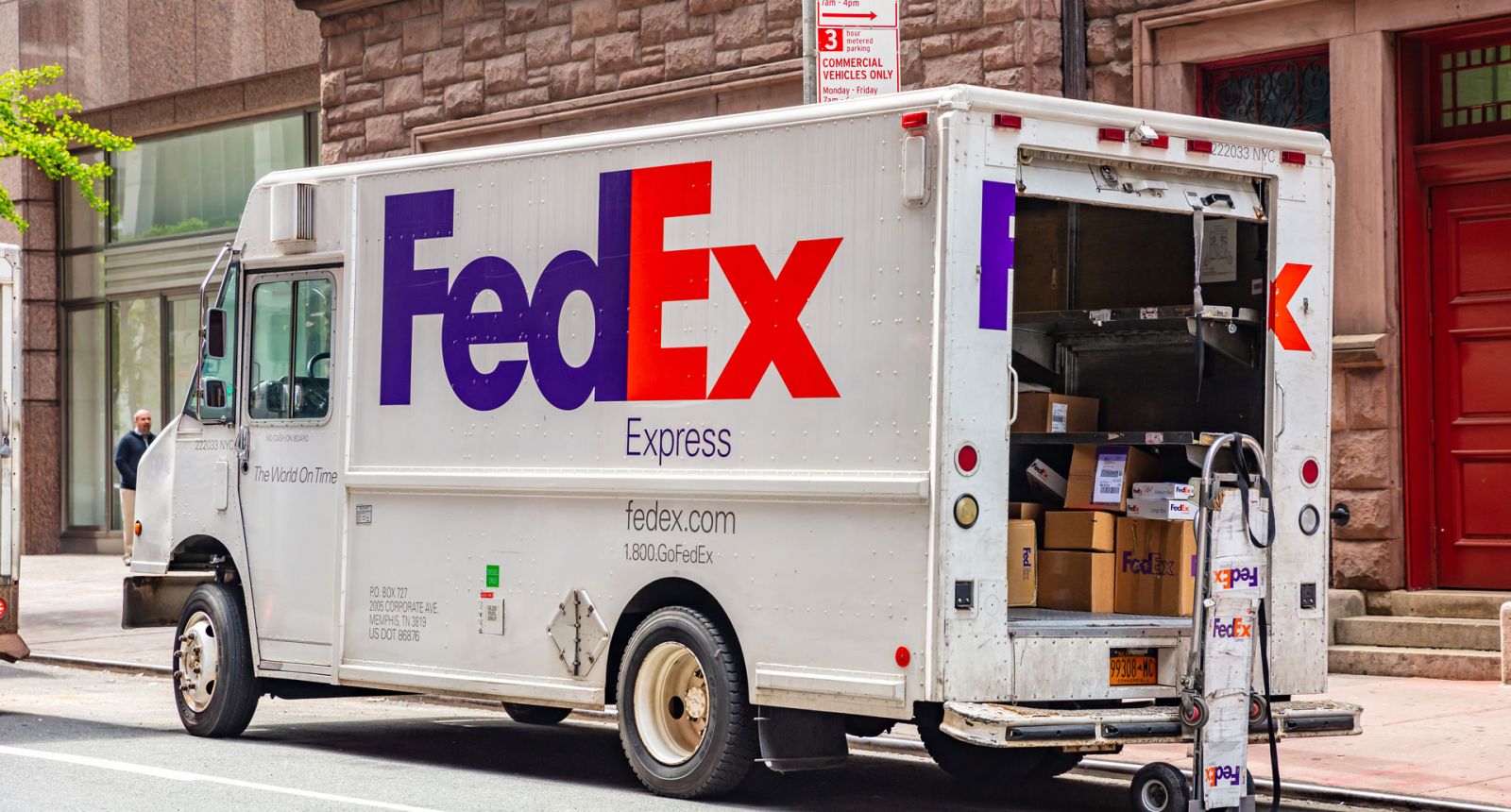Perhaps some of you remember that last year you received an email where we asked if you were interested in being able to track the temperature of your wine: from the time you made an order, during the shipping process from our winery, and finally to your front door.
For some years, I was indeed curious to know how relevant the thermal stress is during our shipments, especially those going to the US where the delivery time is longer due to customs procedures and the bureaucracy logistics for alcoholic beverages.
My curiosity was satisfied thanks to a friend who introduced me to Wenda, an IT company dealing with special services for the supply chain. One of the services that the Wenda team offers is to utilize temperature control devices in shipments.
Therefore, we decided to track about fifty shipments during 2021 to understand how big the impact of thermal stress might be on the wine.
How was the temperature tracking carried out?
The temperature control device was the size of a small USB stick that was inserted between the bottles in the package. Once the device was activated, it registered the temperature every 15 minutes for up to 60 days.
Once the client received the package they could simply take out the device and insert it into a USB port on a computer, download the data file, and send it to the Wenda platform where the data was processed and shared with us.
The critical threshold
Now, I imagine you are wondering what the maximum temperature allowance is so as not to “compromise” the wine.
Unfortunately, it is difficult to give a clear answer. The factors that contribute to determining the threshold involve the period in which the wine exceeds a certain temperature limit, as well as the stability of the wine, which is much higher in young wines and more delicate in aged wines.
To this end, different experiments have been carried out. For example, a journalist organized a blind tasting of samples of the same wine by comparing different bottles stored in the winery cellar with those that were kept in the trunk of his car over the entire summer.
Based on the results, I can cautiously confirm that wine, in general, always needs to be stored below 25 °C (77 °F) and that there are no particular problems if the temperature arrives close to 30 °C (86 °F) during transport, or even if that temperature is exceeded for a few hours. The important thing is to never exceed 45-50 °C (113/122 °F) as that could also compromise the sealing of the cork.
The “wine journey” and the temperature of the various stages
To simplify things, I will only speak about the longer shipments overseas to the US and set aside the national and European shipments, where we haven’t noticed any exceeding of the recommended temperature.
Below, you can see the chart regarding the shipping temperatures. If you want to read more, you can find the complete file here.

Our logistics partner has been MBE Bencienni for a couple of years and they handle all logistical and bureaucratic procedures for the delivery of our wines globally.
From the winery to the MBE warehouse
Once we have received your order, my father, Fernando, prepares the package in the winery which is then picked up once a week by the MBE truck.
The route from our winery to Montevarchi, the headquarters of MBE Bencienni, takes approximately 30 minutes. During this phase, the wine does not suffer any extreme increases in temperature.
When the wine is stored in the MBE warehouse waiting to be shipped, the temperature is controlled and is never excessive.
Shipment toward an international HUB for handling
In the next phase, the wines are sent in a truck to an international shipping hub in Europe which can be either in Milan or Germany.
In this stage, which lasts a couple of hours, an increase in temperature was registered but only exceeded 30 °C (86 °F) once.
When the wine arrives at the sorting hub, it remains there in the warehouse for several days. It is stored at a controlled temperature and thus no problems were recorded.
The journey by air and the arrival at the warehouse of the US importer
The shipment in the cargo hold of the airplane has never created any problems; indeed the wine remains cool at around 10 °C (50 °F).
After the plane ride, the wine is immediately sent to the warehouses of MBE’s different partners that then handle the customs declaration (Florida, California, or New York). The wine might also be stored for several days in this stage, but at a controlled temperature and, therefore, no deviations were registered.

FedEx takes charge of the shipment and delivery to the end clients home
This is, in my opinion, the most critical moment: once the wine has been cleared through customs, the package is handled by the courier company (usually FedEx). The courier company will ship it between its different hubs and then deliver it to the end client.
It is in this specific stage, mostly during the final delivery day, that certain increases in temperature have been detected in southern US states through July and August. In these cases, temperatures of over 30 °C (68 °F) have occurred for a couple of hours.
However, I must say that in the cases when this deviation was registered, it was limited to a few hours only and the temperatures always stayed well below 40 °C (104 °F).
But is it better to wait to ship wine until after the summer or not?
My advice is that if you are not in a hurry or in need of the wine quickly, any risks are certainly eliminated if you wait until the end of September to order (or you can ask us to postpone the shipment of an order made during the summer).
I feel I need to advise you to choose this option if you purchase older vintages from our Family Library, as they can be more delicate.
However, if you need to receive the wine bottles before September, or if you have already made the order this summer (especially, if you do not live in a state where the weather is warm), you do not need to worry, your wine will arrive in the best condition.
Most importantly, make sure to have the wine at the right temperature when you drink!




